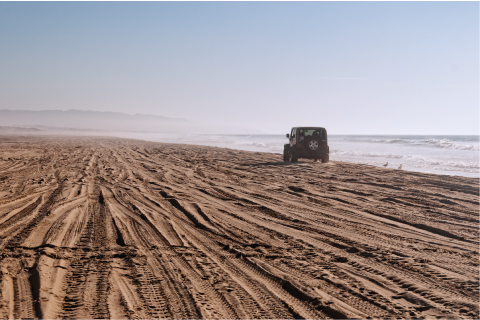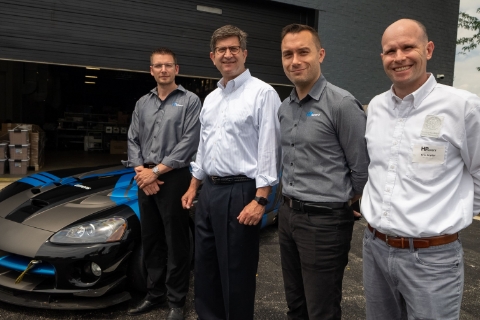FROM THE HILL
The Golden Age of Replica Cars Is Upon Us
By Eric Snyder
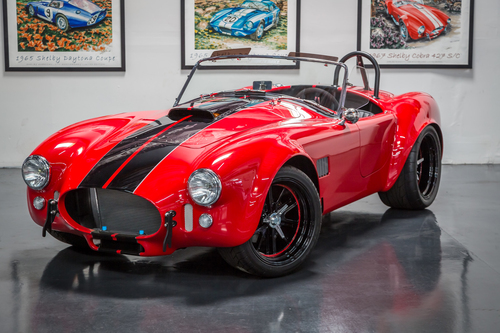
iconic Cobra.
When Congress passed a SEMA-led law in 2015 to allow small businesses to produce completed replica cars, it was hailed as “revolutionary.” For the very first time, federal statute authorized small auto manufacturers to produce completed replica vehicles under a streamlined regulatory structure that reflected the distinctly different business model of this niche industry. The National Highway Traffic Safety Administration (NHTSA) completed the law’s implementing regulation in January, which must be reviewed by the Biden administration before it becomes official. NHTSA’s regulation offers a business-friendly pathway for companies to begin producing classic cars in 2021.
The Low Volume Motor Vehicle Manufacturers Act, which is more commonly known as the replica car law, enables small-volume auto manufacturers to construct up to 325 such replica cars a year under a simplified regulatory structure. Replicas must resemble production vehicles manufactured at least 25 years ago to qualify. From ’30s roadsters to ’70s musclecars to the DeLorean of the ’80s—it’s back to the future time.
“SEMA applauds NHTSA’s final rule allowing companies to market classic-themed cars,” said SEMA President and CEO Christopher J. Kersting. “Regulatory barriers have previously prevented small automakers from producing heritage cars for eager customers. The roadblocks have been eliminated. Companies will be able to hire workers, start making necessary parts and components, and produce and sell cars.”
Until now, NHTSA had only a one-size-fits-all regulatory framework intended for companies that mass-produce millions of cars. Members of Congress understood that a car produced in 1931 is different from a 2021 vehicle and therefore adopted the kit-car approach that treats the car as automobile equipment. While exempt from the vehicle-based Federal Motor Vehicle Safety Standards (FMVSS), parts used in replica cars produced under the 2015 law must meet NHTSA’s equipment-based standards. The law applies to the appearance of the vehicle, which means manufacturers can incorporate new platforms and high-performance equipment under the hood.
Implementation of the replica car law promises to create opportunities throughout the industry. For example, traditional kit-car businesses such as Superformance and Factory Five will be able to diversify their customer bases. For other companies such as DeLorean Motor Co., it is a chance to sell their classic original again.
There will still be many enthusiasts who prefer to assemble a car from a kit or purchase a rolling chassis and install the engine and transmission themselves. Those gearheads will still have that option. For consumers who may not have the time or skills to build a kit car, they now have the option to purchase a turnkey replica.
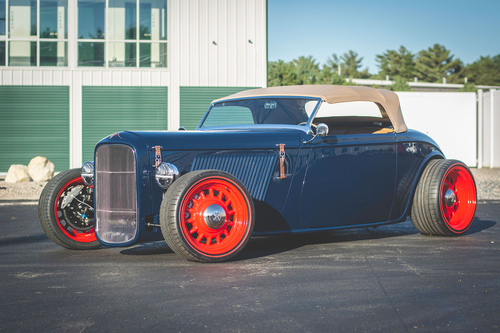
optional ’32 Deluxe nose.
Change is Never Easy: A History of the Replica Car Law
When NHTSA was created in the ’60s, the agency focused its attention on vehicles coming off the assembly line. Over subsequent decades, many other countries expanded their policies to create separate programs for regulating low-volume vehicle manufacturers. Meanwhile, it was impossible for domestic small businesses to produce limited-edition classics since NHTSA required, for example, a ’26 Packard replica to comply with current model-year vehicle standards.
SEMA worked closely with a core group of companies to craft legislation authorizing the replica car program. The bill was first introduced in 2011 by former U.S. Representative John Campbell (R-CA). The quest toward enactment involved a considerable education campaign on Capitol Hill and faced long odds, as the issue proved obscure to most members of Congress and staff.
Gradually, the program’s merits were understood. Along the way, SEMA was able to partner with longstanding legislative allies, including U.S. Reps. Bill Posey (R-FL) and Doug LaMalfa (R-CA), in addition to fostering relationships with Reps. Markwayne Mullin (R-OK), Gene Green (D-TX), and Mike Kelly (R-PA), who were integral in enacting the Low Volume Motor Vehicle Manufacturers Act into law in 2015. U.S. Senator Jon Tester (D-MT) and former U.S. Senator Dean Heller (R-NV) played critical roles in securing the Senate’s approval of the replica car law.
SEMA and the industry celebrated passage of this carefully crafted law, which explicitly required NHTSA, the U.S. Environmental Protection Agency (EPA), and the California Air Resources Board (CARB) to issue implementing regulations or guidance within 12 months. Several years would pass before there was tangible action. During that time, SEMA and members of the industry contacted the agencies and expressed concern about missing the December 2016 statutory deadline. SEMA pursued grassroots and media campaigns while members of Congress met with agency officials, sent letters, and even questioned government officials during congressional hearings.
Partial success was achieved in 2019 when the EPA issued guidelines for the engine packages to be installed and CARB issued a regulation for certifying the vehicles and engine packages. The law requires vehicles to meet current model-year emissions standards, and the program was based on certified engine packages recognized by California for specially constructed vehicles.
NHTSA moved at a much slower pace. Despite repeated outreach to senior agency officials, SEMA felt it had little choice but to ask a federal court to intervene. A 2019 lawsuit citing NHTSA’s failure to issue a regulation in a timely fashion had its intended effect—helping spur the agency to issue a proposed rule in January 2020. The industry welcomed NHTSA’s replica car proposal, although it included a few provisions that required modification. Most importantly, the draft rule provided the industry with optimism that implementation of the law was in sight.
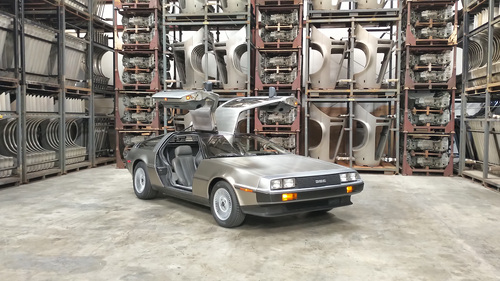
“NHTSA started off with a more conservative approach under which replica vehicle manufacturers would be limited to the same length, width and height as the vehicle being replicated,” said Stuart Gosswein, SEMA’s senior director of federal government affairs. “The draft regulation even specified that the replica vehicle’s interior would have to match the original vehicle’s interior dimensions as well, so they’d just be building reproductions. We argued that the operative word is ‘resemble’ not ‘duplicate,” and they agreed.”
NHTSA issued a final rulemaking on January 15, 2021, which included changes requested by the industry (highlighted in the sidebar “Major Issues Addressed in Final Rule”). The program does not take effect until the NHTSA rule has been officially published in the Federal Register, which was delayed due to the presidential transition but is expected to occur within weeks.
Businesses producing replica cars will need to register with NHTSA and the EPA (and CARB, if selling cars in California). The registration process may take up to 90 days for NHTSA review and approval.
Background on Kit Cars
Kit cars have been around nearly as long as the automobile itself. The term is associated with vehicles that are completed by the purchaser.
Production encompasses many possibilities, ranging from hobbyists assembling all the parts in their garages to turning a rolling chassis produced by a commercial manufacturer into a completed car by installing the powertain.
The kit-car industry took hold in the ’50s as companies began marketing products that provided older vehicles with a second life. Beyond ordinary repair and replacement, kit-car products instilled a desire for customization and personalization. By the ’70s, enthusiasts were able to purchase components to convert older cars into unique classics or build them from the ground up. The industry addressed a variety of issues, whether supplying consumers with sports-car replicas or fanciful variations of historic vehicles. Kit cars expanded the marketplace, addressed demand for vehicles originally produced in limited numbers, and provided the latest technology.
SEMA embodies the kit-car industry’s spirit and soul. It also has two councils whose companies incorporate the industry: the Automotive Restoration Market Organization and the Hot Rod Industry Alliance.
Replica Vehicle FAQs
Why is this law necessary? Until now, all motor-vehicle manufacturers were treated the same, regardless of whether a company produced one car or one million. The law directed NHTSA to create a simplified regulatory program that considers the unique differences between a company that mass produces thousands of cars and one that handcrafts a limited number.
What is a “low-volume” manufacturer? The law states that a low-volume manufacturer is a company whose annual worldwide production (including by a parent or subsidiary of the manufacturer) is not more than 5,000 motor vehicles each year. Such companies will each be able to sell up to 325 replica cars annually in the United States.
How does the law define a replica vehicle? A replica vehicle’s body resembles that of another motor vehicle produced at least 25 years ago. The vehicle is produced under a license agreement from the original manufacturer, its successor/assignee, or the current owner of the replicated vehicle’s intellectual property rights. In some instances, the replica car manufacturer may be the current owner (for example, when the original manufacturer no longer exists or the replica car has a distinguishably different appearance and brand name).
How are replica cars regulated by NHTSA? Replica vehicles are subject to
NHTSA’s equipment standards, including lighting, brake hoses, glass and tires. However, the automobiles are exempt from safety standards that apply to motor vehicles (roof crush, side impact, bumper standard, etc.). The exemption recognizes that it is impractical to apply current model-year standards to vehicles designed decades ago or crash-test vehicles when only a few are being produced.
How are replica cars regulated by the EPA and CARB? Replica cars will meet current model-year emission standards. The engine package must be approved by the EPA and, if produced or sold in California, by CARB. SEMA and the replica car industry worked with the agencies to develop an EPA guidance document and a CARB regulation for recognizing compliant engine packages.
When will the program begin? The program has been on hold while NHTSA drafted a regulation. NHTSA submitted a final rule to the Federal Register on January 15, 2021. The rule becomes effective upon publication, which means that companies can then file registration applications to be reviewed by NHTSA within 90 days, allowing sales to commence. Companies are also required to register and file annual reports with the EPA and CARB.
How will this law impact kit-car consumers? Hobbyists will still have the freedom to assemble their own vehicles from kits if they prefer, including modern-era cars. The law expands the market of who can purchase a replica car to include those who don’t have the time or skills to complete a kit car. In short, this law means more business opportunities for the industry and more choice for consumers.
Will I be able to title/register the car? SEMA has worked with many states to establish specific categories for titling, registering and regulating kit cars (for example, street rods and customs, including replicas and specialty constructed vehicles), which will also apply to turnkey replicas. For more information on the laws in your state, visit the Titling & Registration page on the SEMA Action Network’s website, www.semasan.com.
Where can I find more information? www.sema.org/replica.
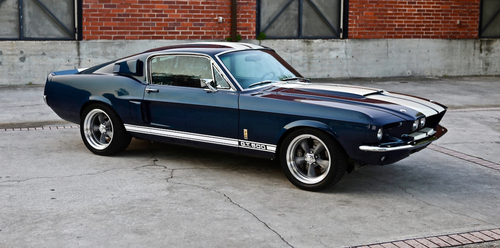
Major Issues Addressed in Final Rule
Size: NHTSA adopted a size definition consistent with that adopted by CARB, whereby the length, width and height of the replica motor vehicle may vary +/-10% from the original motor-vehicle dimensions. It may also exceed that number for a warranted need, such as incorporating an extra safety feature.
Definition of “Resemble”: NHTSA recognizes that the law permits the sale of vehicles that resemble a vehicle that is least 25 years old but is not an exact reproduction. The agency will take an individualized approach when determining that a replica car sufficiently resembles the overall appearance of the original vehicle, noting that there is a difference between the term “resemble” versus merely “inspired” by an older vehicle, or it “reminds” the public of past automotive heritage.
Term “Body”: When applying the term “body” to replica cars, the agency will be referring to only the outside appearance of the vehicle. The term will not apply to the interior portions of the vehicle.
Intellectual Property (IP): Replica car manufacturers must certify that they own or have a license for the IP associated with the vehicle. However, the manufacturer is not required to submit documentation. NHTSA agreed that the U.S. Patent and Trademark Office or the federal courts are more proper venues for resolutions if there are any disputes.
Multistage Manufacturing: In addition to replica car companies being the sole fabricators of the vehicles, NHTSA will allow replica cars to be produced in two or more stages. Under that scenario, the replica car manufacturer is the final stage manufacturer and is responsible for instructing the incomplete vehicle manufacturer to assign a replica car VIN. (The Society of Automotive Engineers assigns VINs and will now include a unique replica car manufacturer VIN that will assist NHTSA in monitoring the replica car inventory.)
Registration: NHTSA has streamlined the regulatory text to clarify how the agency will process registrations and confirmed that registrations are deemed approved if processing has not been completed by the agency (unless additional time is necessary for incomplete registrations). NHTSA retains the authority to revoke a registration at any time if the manufacturer has failed to comply with the rules.
 Equipment: NHTSA will permit manufacturers to comply with the replacement-equipment provisions contained in the lighting and glazing standards (FMVSS numbers 108 and 205), which allow manufacturers to comply with the standards in effect for the original equipment being replaced. If installing seatbelts with retractors, they must comply with the current FMVSS number 209 for seatbelt assemblies. (NHTSA assumes that most replica vehicle manufacturers will provide three-point seatbelts voluntarily or, at minimum, a lap belt.)
Equipment: NHTSA will permit manufacturers to comply with the replacement-equipment provisions contained in the lighting and glazing standards (FMVSS numbers 108 and 205), which allow manufacturers to comply with the standards in effect for the original equipment being replaced. If installing seatbelts with retractors, they must comply with the current FMVSS number 209 for seatbelt assemblies. (NHTSA assumes that most replica vehicle manufacturers will provide three-point seatbelts voluntarily or, at minimum, a lap belt.)
Preemption: The rule preempts any state safety standards for replica vehicles.


